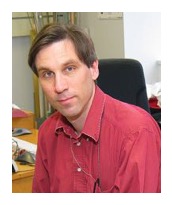CRESST II Graduate Student Opportunities 2020-2021
CRESST II Graduate Student Interaction Day Summary
The CRESST II Graduate Student Interaction Day is an annual event that brings together NASA scientists and graduate students to discuss opportunities to collaborate. Under normal conditions, the event would be held at NASA/Goddard Space Flight Center (GSFC) and include presentations about current NASA research projects and a poster session to allow students and scientists to talk one-on-one about specific research opportunities. Though the COVID-19 pandemic has made an in-person event no longer feasible, CRESST II has collaborated with NASA scientists to organize several research opportunities available to highly-talented and skilled graduate students looking to gain research experience or contribute to their thesis/dissertation research.
Available opportunities span a variety of research areas and are described in more detail below. Each opportunity description includes the NASA scientist who will serve as the mentor, the sponsor’s areas of expertise, details about the work the graduate student would be performing, skills required for the position, and the general timeframe when a graduate student could start. Preliminarily, work may start virtually but could transition to more onsite work at NASA/GSFC based on each mentors needs and the status of the GSFC campus. Funding is available for most of the opportunities and will be discussed during the offer process.
If you are interested in applying to any of the opportunities listed below, complete and submit the official application form along with the following documents: curriculum vitae, essay, college transcript, and the contact information for two references. Applications should be sent via email to the CRESST II Program Associate, Katherine McKee (katherine.s.mckee@nasa.gov). Mentors will review all applications and then contact a shortlist of candidates to discuss the opportunity in more detail. Offers will be made on a rolling basis at the mentors discretion. The positions will remain available until filled. Any questions should be directed to the CRESST II Program Associate.
Currently Available Opportunities:
X-ray Studies of Normal Galaxies - Ann Hornschemeier
Cosmology and Submillimeter Astrophysics - Alan Kogut
For information on opportunities made available during Graduate Students Interaction Day in February 2021, email to the CRESST II Program Associate, Katherine McKee (katherine.s.mckee@nasa.gov).
X-ray Studies of Normal Galaxies

Ann Hornschemeier
X-ray Astrophysics Laboratory (Code 662)
Area of Research: X-ray studies of normal galaxies
Number of Students Needed: 1
Availability for Opportunity: Summer 2020 or later
Opportunity Description: We have projects using Chandra, NuSTAR, XMM and/or other X-ray missions. The project would involve doing X-ray data analysis to study point source populations (neutron stars and black holes) as well as the hot interstellar medium in both nearby and distant galaxies. The student would use both standard tools for X-ray data analysis as well as write code in e.g., Python and would be expected to write papers and make presentations on their work. We have a group of approximately 6 PhD scientists working on a range of topics concerning X-ray emission from normal galaxies.
Required Skills: Proficiency with UNIX/LINUX, computer coding (Python or other languages), writing in Latex, willingness to work in a team.
Cosmology and Submillimeter Astrophysics

Alan Kogut
Observational Cosmology Laboratory (Code 665)
Area of Research: Cosmology, sub-mm astrophysics
My research areas and current duties include- Cosmology: Measurements of the spectrum, anisotropy, and polarization of the cosmic microwave background radiation from balloon and satellite platforms Astrophysics: Measure Galactic far-IR and radio emission as probe of physical conditions in the diffuse interstellar medium. Instrumentation: Develop new instrumentation for polarization-sensitive detection of radiation at microwave through sub-mm wavelengths. Principal Investigator of the PIPER and BOBCAT balloon programs. Principal Investigator for PIXIE, CUBiST, AMEX, and Dust Buster development.
Number of Students Needed: 3
Availability for Opportunity: Immediately
Opportunity Description: Students with physics, astronomy, engineering, or computer science backgrounds can play a major role for flight projects to develop instrumentation and analyze data from balloon-borne measurements of the cosmic microwave background and the diffuse interstellar medium. Current and planned projects include the PIPER measurements of the cosmic microwave background, AMEX measurements of anomalous microwave emission, Dust Buster measurements of interstellar dust, and BOBCAT technology development for a future balloon-borne "Great Observatory".
Required Skills:Previous students have had backgrounds in physics, astronomy, or engineering. Useful skills include some subset of instrumentation, data analysis, cryogenics, and mechanical engineering, plus a strong desire for hands-on development of flight hardware.

Updated: 2021-Mar-02